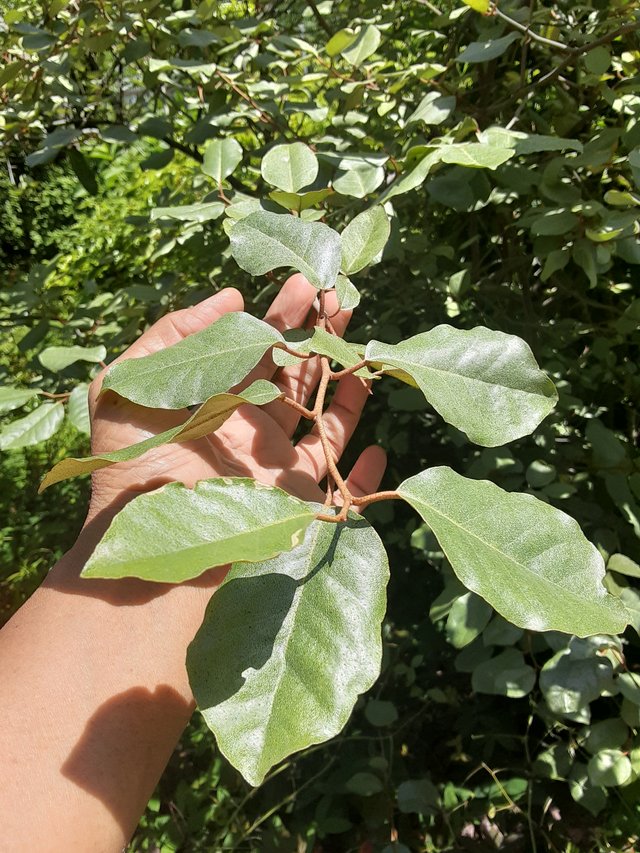The autumn olive's shimmering silver-scaled leaves change color throughout the seasons, offering both beauty and drought resistance

Elaeagnus umbellata, also known as autumn olive, autumnberry, or Russian olive, is a deciduous shrub or small tree native to eastern Asia. It's known for its beautiful and interesting foliage, along with fragrant flowers and edible fruits.
Leaves of Elaeagnus umbellata:
- Appearance: The leaves of Elaeagnus umbellata are a sight to behold. They are alternate, meaning they grow singly along the stem in a staggered pattern. Each leaf is typically 4-10 cm long and 2-4 cm wide, with wavy margins that add a touch of elegance.
- Color: The leaves put on a fascinating color show throughout the seasons. When they first emerge in early spring, they are covered in a dense layer of minute silvery scales, giving them a shimmering, almost frosted appearance. As summer progresses, these scales gradually wear off on the upper surface, revealing a bright to dull green color. The underside, however, remains heavily coated in the silvery scales, creating a captivating contrast.
- Benefits: This unique double layer of scales serves more than just aesthetic purposes. The silvery coating on the underside of the leaves helps to reflect sunlight and reduce water loss, particularly beneficial in hot and dry climates.
Additional characteristics of Elaeagnus umbellata:
- Flowers: In late spring to early summer, clusters of small, fragrant, yellowish-white flowers bloom from the leaf axils. These blossoms are a magnet for pollinators like bees.
- Fruits: Following the flowers, the plant produces small, round, red fruits with silvery speckles. These ripen in fall and are enjoyed by birds, but are generally considered to be unpalatable for humans.
- Growth habit: Elaeagnus umbellata can grow as a single-stemmed shrub or a multi-stemmed tree, reaching heights of up to 11 meters (3.5 meters more common). It can also develop sharp thorns, so be mindful when planting near walkways or play areas.
Overall, Elaeagnus umbellata's captivating leaves, fragrant flowers, and colorful fruits make it a valuable addition to landscapes. Just be aware of its potential to become invasive in some areas and the presence of thorns before planting.
Ref.:
 |  |
Upvoted! Thank you for supporting witness @jswit.